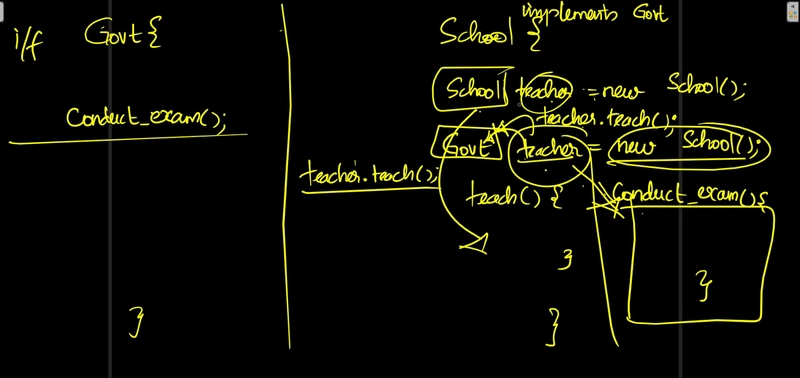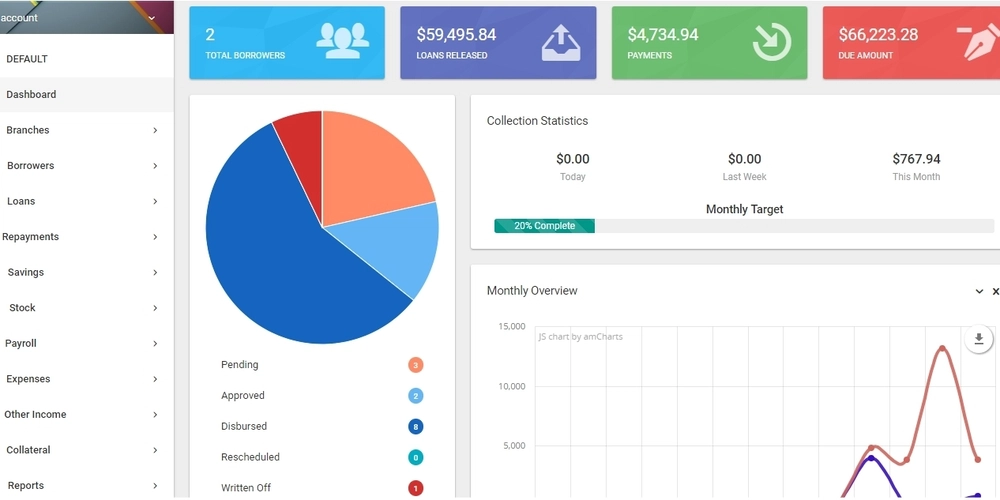How to Start Learning AI in 2025
If you’ve scrolled through your feed recently, you’ve seen the AI buzz: from LLM integrations that claim to handle all your customer support needs to “game-changing” coding agents that promise to replace half your dev team. Yet behind the bold headlines, many founders and tech leaders still wonder: where do I actually start if I want to build real, value-adding AI systems—especially in a world that seems to shift every month? Having spent nearly a decade in AI, I’ve seen both the hype-fueled missteps and the genuinely transformative approaches. Below is a concise guide on how you can begin your AI journey in 2025, structured around the practical challenges I’ve helped solve at AI Flow for small and mid-size companies. 1. Understand Why You’re Learning AI The first step is clarifying your goal. Are you a startup looking to build predictive models that drive your new product? Or are you part of a mid-enterprise that needs to streamline operations with smarter analytics? Many businesses jump into AI after facing a real bottleneck: too much manual work, too much underused data, content moderation overwhelm, or inaccurate forecasting. That’s when they realize they need deeper AI capabilities. Don’t just learn AI because it’s the current hype. You’ll end up scratching the surface, only to build suboptimal AI and Machine Learning projects. Learn the fundamentals well, and you’ll be able to scale as much as you want. Learn just some highlights, and your foundation will be brittle, and you won’t be able to build end to end products, knowing what happens behind. The risk of learning AI just because it’s cool will start showing up when things don’t go well. Any engineer can call some APIs, and build some no code automations. But what if things don’t work out? What if your model is not generalizing? What if your data augmentation steps are not the best? What is your inference time is 4X slower and more expensive than it should be? It will be at this moment when deep knowledge will show up and make a difference. 2. Start with the Foundations Artificial Intelligence may look glamorous, but good old-fashioned math, data organization, and software engineering remain crucial. If you’re just beginning, place these at the core of your self-study plan: Mathematical Basics: Statistics (confidence intervals, distributions) and linear algebra (matrix operations, eigenvalues) are musts. They help you interpret model results, debug weird behaviors, and avoid trusting a new model blindly just because it “kind of works.” Data Handling: Learn how to gather, clean, and structure data. Tools like Python’s pandas or frameworks for big data—like Spark—will save you from chaotic spreadsheets and repeated ETL tasks. Coding & Version Control: Even if you plan to focus on data science or ML research, you’ll eventually need to tie your model into a real product. Basic command over Git, Docker (for containerizing your code), and a cloud platform (AWS, GCP, or Azure) is invaluable. 3. Pick One Model and Go Deeper It’s tempting to test every new library out there—LLMs one day, object detection the next. In practice, you’ll learn faster if you pick a model type relevant to your business and really drill down. Regression/Forecasting Ideal if you’re in finance, supply chain, or any domain forecasting demand. Deep diving into time-series analysis, for instance, will give you a clear sense of how typical ML (and now advanced AI) can streamline recurring tasks. Classification If you have user-generated content or any scenario where you label items as “spam or not spam,” “duplicate or unique,” or “priority vs. backlog,” classification is your world. We once helped a client handle thousands of daily user submissions, building a custom classification model that halved their moderators’ workload overnight. Generative Models Especially relevant if your business deals with image creation, text generation, or synthetic media. At AI Flow, we’ve built generative pipelines for hyper-realistic video content, training advanced architectures while carefully managing the cost and complexity. 4. Learn to Deploy, Not Just Experiment Knowing how to train a model is a great start, but your value multiplies once you can integrate AI into a live product. This is where experience with back-end frameworks, container orchestration (Kubernetes or ECS), and modern serverless approaches is critical. The real challenge is ensuring your model remains stable and secure under production traffic. Example: We partnered with a data-heavy content curation platform that had a workable model living on a researcher’s laptop. Once we helped them deploy it in a scalable environment (with automated retraining and robust monitoring), the real business impact showed up—fewer content duplicates, faster moderation times, and a meaningful bump in user satisfaction. 5. Find Mentors or Specialized Tea

If you’ve scrolled through your feed recently, you’ve seen the AI buzz: from LLM integrations that claim to handle all your customer support needs to “game-changing” coding agents that promise to replace half your dev team. Yet behind the bold headlines, many founders and tech leaders still wonder: where do I actually start if I want to build real, value-adding AI systems—especially in a world that seems to shift every month?
Having spent nearly a decade in AI, I’ve seen both the hype-fueled missteps and the genuinely transformative approaches. Below is a concise guide on how you can begin your AI journey in 2025, structured around the practical challenges I’ve helped solve at AI Flow for small and mid-size companies.
1. Understand Why You’re Learning AI
The first step is clarifying your goal. Are you a startup looking to build predictive models that drive your new product? Or are you part of a mid-enterprise that needs to streamline operations with smarter analytics? Many businesses jump into AI after facing a real bottleneck: too much manual work, too much underused data, content moderation overwhelm, or inaccurate forecasting. That’s when they realize they need deeper AI capabilities.
Don’t just learn AI because it’s the current hype. You’ll end up scratching the surface, only to build suboptimal AI and Machine Learning projects. Learn the fundamentals well, and you’ll be able to scale as much as you want. Learn just some highlights, and your foundation will be brittle, and you won’t be able to build end to end products, knowing what happens behind.
The risk of learning AI just because it’s cool will start showing up when things don’t go well. Any engineer can call some APIs, and build some no code automations. But what if things don’t work out? What if your model is not generalizing? What if your data augmentation steps are not the best? What is your inference time is 4X slower and more expensive than it should be? It will be at this moment when deep knowledge will show up and make a difference.
2. Start with the Foundations
Artificial Intelligence may look glamorous, but good old-fashioned math, data organization, and software engineering remain crucial. If you’re just beginning, place these at the core of your self-study plan:
- Mathematical Basics: Statistics (confidence intervals, distributions) and linear algebra (matrix operations, eigenvalues) are musts. They help you interpret model results, debug weird behaviors, and avoid trusting a new model blindly just because it “kind of works.”
- Data Handling: Learn how to gather, clean, and structure data. Tools like Python’s pandas or frameworks for big data—like Spark—will save you from chaotic spreadsheets and repeated ETL tasks.
- Coding & Version Control: Even if you plan to focus on data science or ML research, you’ll eventually need to tie your model into a real product. Basic command over Git, Docker (for containerizing your code), and a cloud platform (AWS, GCP, or Azure) is invaluable.
3. Pick One Model and Go Deeper
It’s tempting to test every new library out there—LLMs one day, object detection the next. In practice, you’ll learn faster if you pick a model type relevant to your business and really drill down.
-
Regression/Forecasting
Ideal if you’re in finance, supply chain, or any domain forecasting demand. Deep diving into time-series analysis, for instance, will give you a clear sense of how typical ML (and now advanced AI) can streamline recurring tasks.
-
Classification
If you have user-generated content or any scenario where you label items as “spam or not spam,” “duplicate or unique,” or “priority vs. backlog,” classification is your world. We once helped a client handle thousands of daily user submissions, building a custom classification model that halved their moderators’ workload overnight.
-
Generative Models
Especially relevant if your business deals with image creation, text generation, or synthetic media. At AI Flow, we’ve built generative pipelines for hyper-realistic video content, training advanced architectures while carefully managing the cost and complexity.
4. Learn to Deploy, Not Just Experiment
Knowing how to train a model is a great start, but your value multiplies once you can integrate AI into a live product. This is where experience with back-end frameworks, container orchestration (Kubernetes or ECS), and modern serverless approaches is critical. The real challenge is ensuring your model remains stable and secure under production traffic.
- Example: We partnered with a data-heavy content curation platform that had a workable model living on a researcher’s laptop. Once we helped them deploy it in a scalable environment (with automated retraining and robust monitoring), the real business impact showed up—fewer content duplicates, faster moderation times, and a meaningful bump in user satisfaction.
5. Find Mentors or Specialized Teams
The fastest progress often comes from direct collaboration with AI specialists. Don’t shy away from seeking out experts—whether it’s a friend who’s been in ML for a decade, or a flexible engineering agency that can co-develop solutions and share knowledge. My own personal journey and building AI Flow showed me that mentorship dramatically accelerates learning, especially when dealing with real-world edge cases.
6. Evolve With the Field
AI in 2025 isn’t static. There are new regulations (like the EU AI Act) that might affect how you store or process data, and the pace of model innovation can be overwhelming. Make it a habit to follow reputable news sources—The Verge’s AI section, Wired’s AI coverage, or specialized newsletters. Understand which breakthroughs are relevant to your situation and which are mostly headline-grabbers.
Final Thoughts
Learning AI may feel like drinking from a firehose, but success usually comes from one well-defined starting point. Maybe that’s a shipping optimization project, a classification model for content, or a demand-forecasting pipeline. Ground yourself in solid math and data engineering, then focus on a single model type that solves a pressing need. Once you have that, you’ll be able to expand or pivot into more ambitious AI territory—just as we’ve done with clients tackling everything from user-generated content overload to scaling beyond the MVP stage.
Through it all, remember: AI is more than fancy algorithms—it’s a method of solving tangible problems in ways that weren’t possible with rigid scripts or guesswork. And that’s why I’ve found it to be an incredibly compelling field to master—particularly when you see the doors it can open for real businesses.









































































































































































![[The AI Show Episode 144]: ChatGPT’s New Memory, Shopify CEO’s Leaked “AI First” Memo, Google Cloud Next Releases, o3 and o4-mini Coming Soon & Llama 4’s Rocky Launch](https://www.marketingaiinstitute.com/hubfs/ep%20144%20cover.png)




























































































































![[DEALS] The All-in-One Microsoft Office Pro 2019 for Windows: Lifetime License + Windows 11 Pro Bundle (89% off) & Other Deals Up To 98% Off](https://www.javacodegeeks.com/wp-content/uploads/2012/12/jcg-logo.jpg)



























![Is this too much for a modular monolith system? [closed]](https://i.sstatic.net/pYL1nsfg.png)






















































































































_Andreas_Prott_Alamy.jpg?width=1280&auto=webp&quality=80&disable=upscale#)
































































































![What features do you get with Gemini Advanced? [April 2025]](https://i0.wp.com/9to5google.com/wp-content/uploads/sites/4/2024/02/gemini-advanced-cover.jpg?resize=1200%2C628&quality=82&strip=all&ssl=1)













![Apple Shares Official Trailer for 'Long Way Home' Starring Ewan McGregor and Charley Boorman [Video]](https://www.iclarified.com/images/news/97069/97069/97069-640.jpg)
![Apple Watch Series 10 Back On Sale for $299! [Lowest Price Ever]](https://www.iclarified.com/images/news/96657/96657/96657-640.jpg)
![EU Postpones Apple App Store Fines Amid Tariff Negotiations [Report]](https://www.iclarified.com/images/news/97068/97068/97068-640.jpg)
![Apple Slips to Fifth in China's Smartphone Market with 9% Decline [Report]](https://www.iclarified.com/images/news/97065/97065/97065-640.jpg)




































































































































